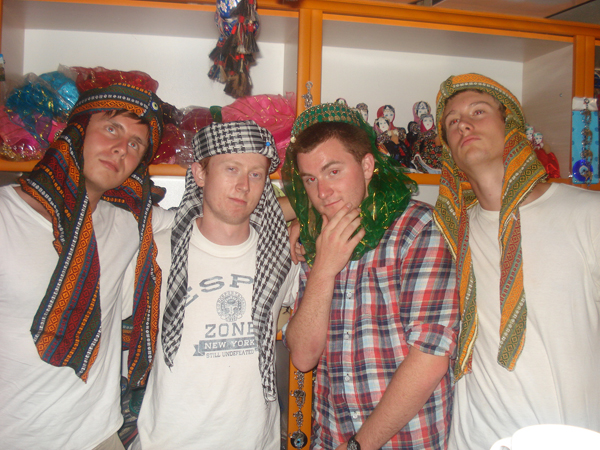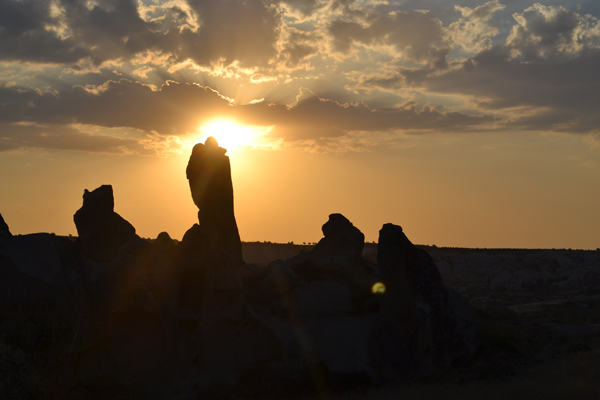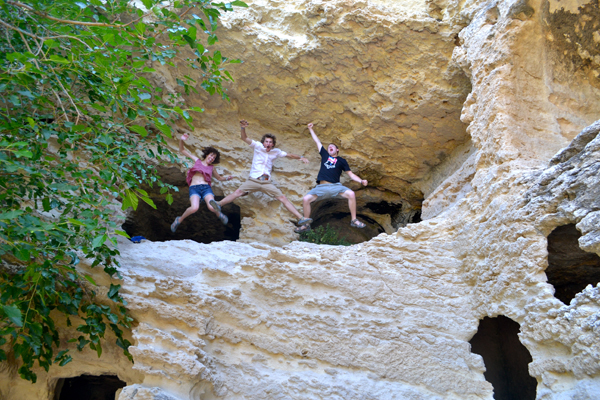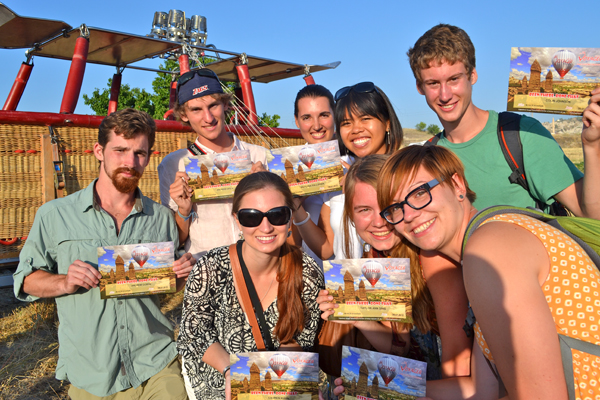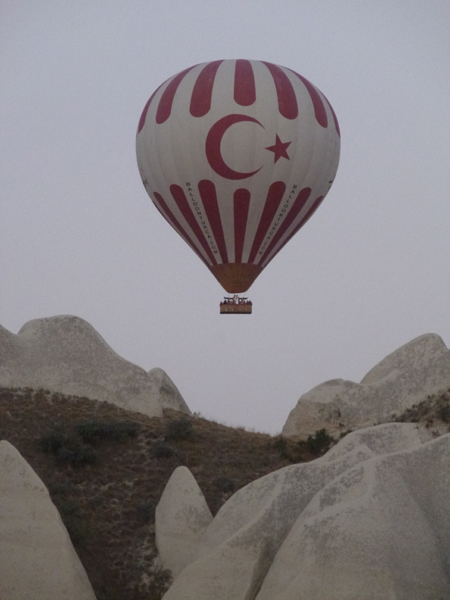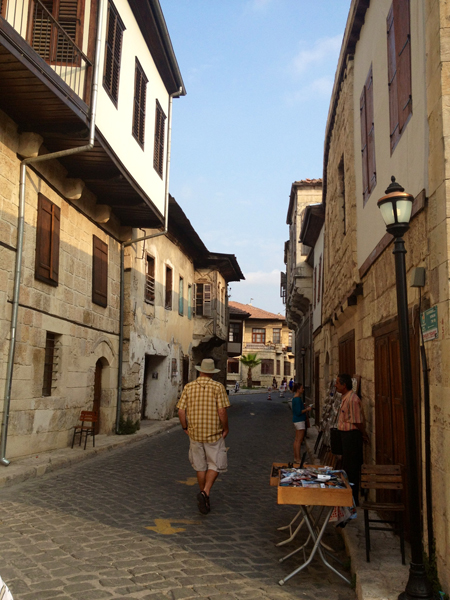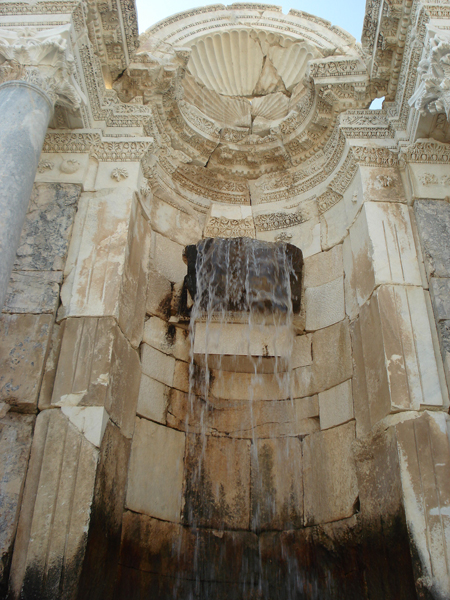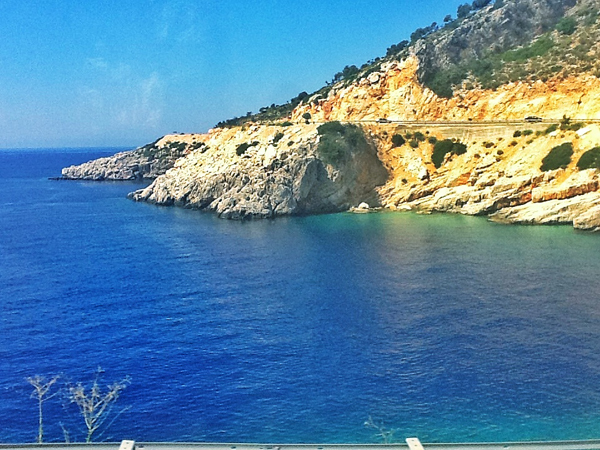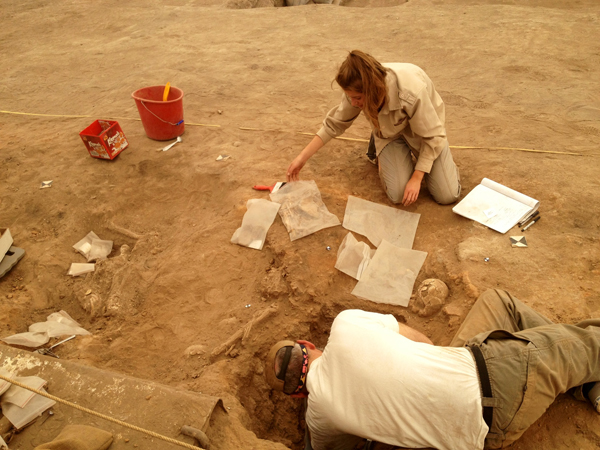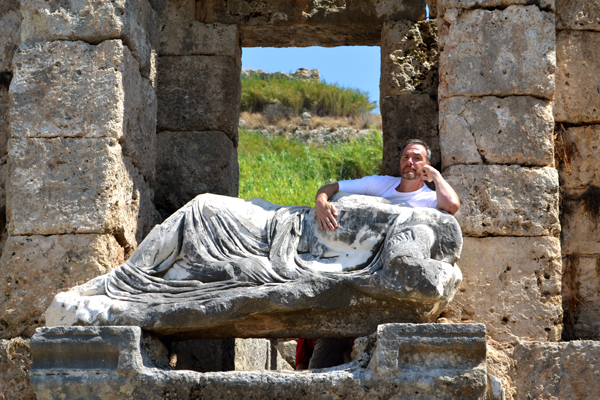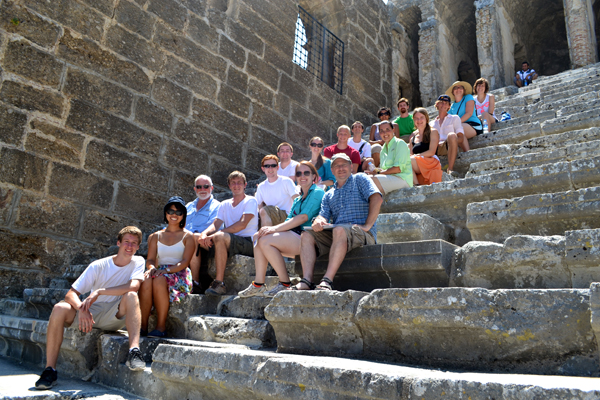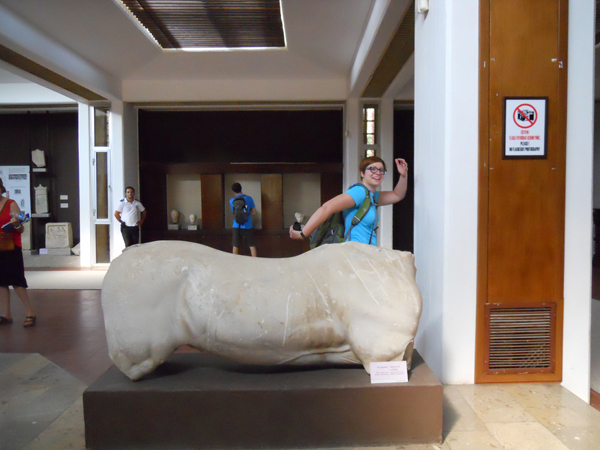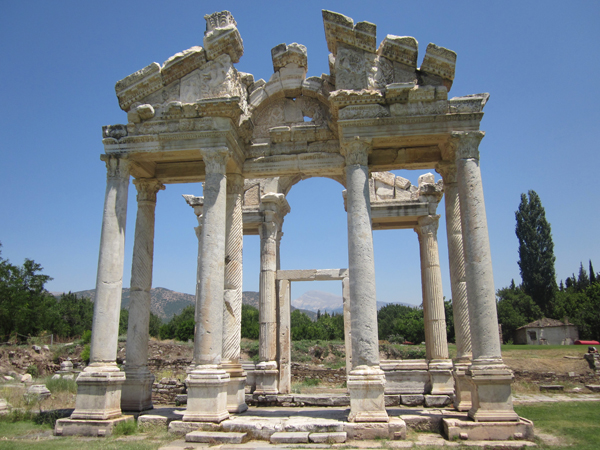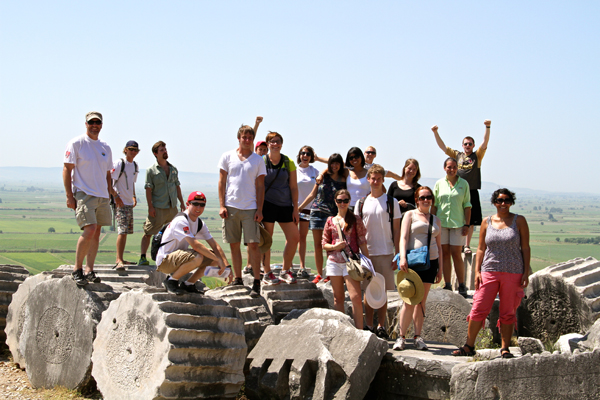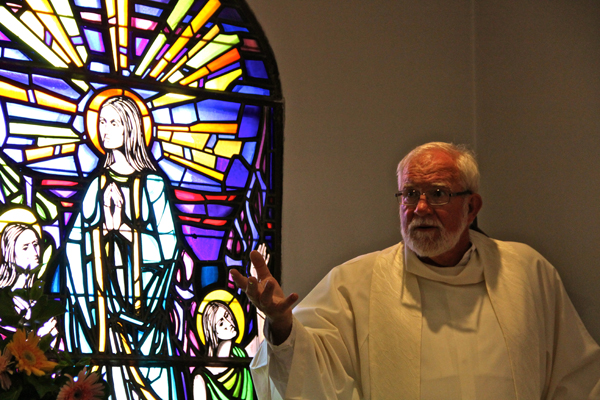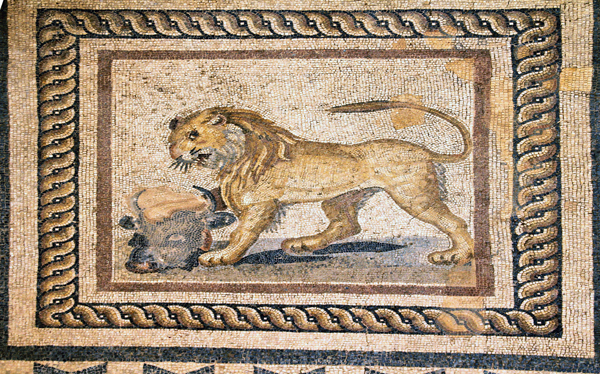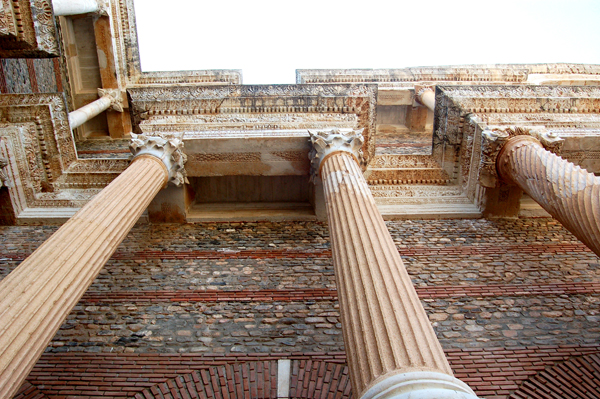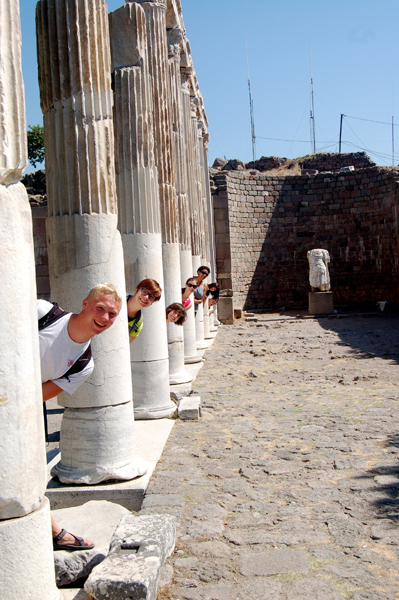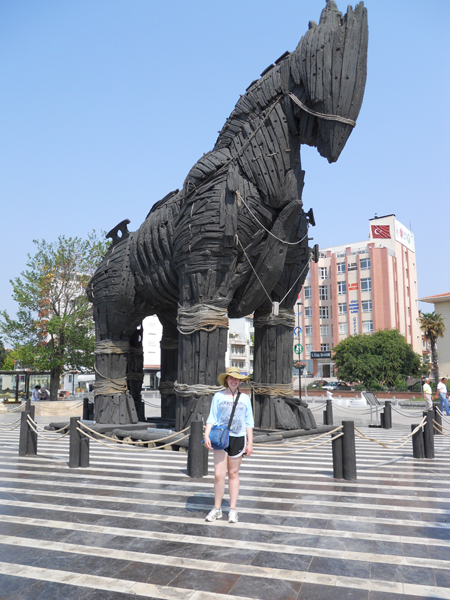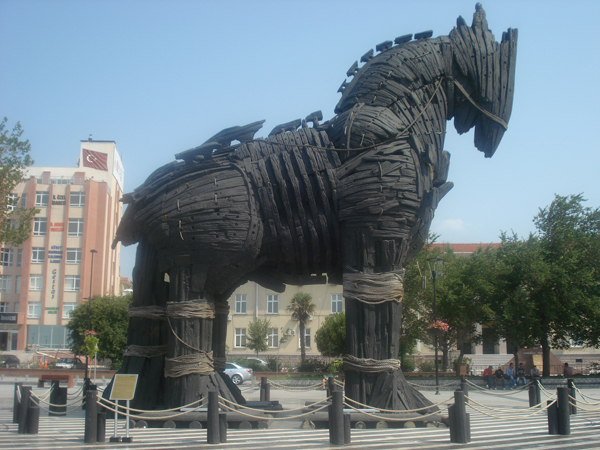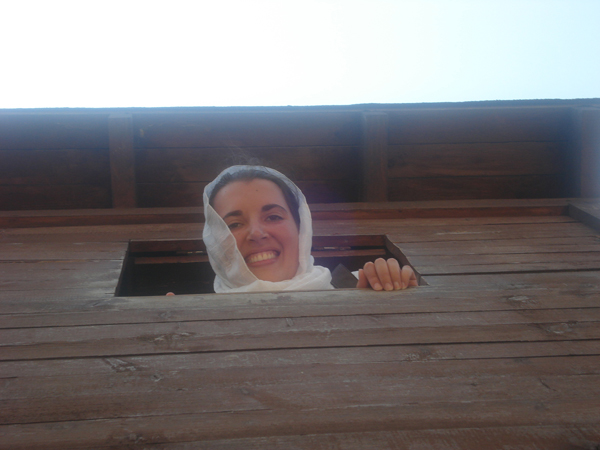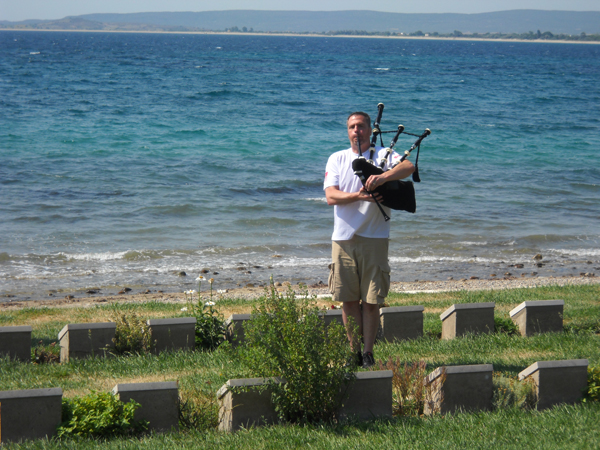-
- (Editor’s Note: Alas, we cannot post all the submitted photos, for lack of space (we’re limited to 100 MB on the blog). Many wonderful photos were taken, and we hope to have a Facebook or Flickr account up in the upcoming weeks, to post them all for your enjoyment. Meanwhile, the best of the submissions can be viewed below).
-
-
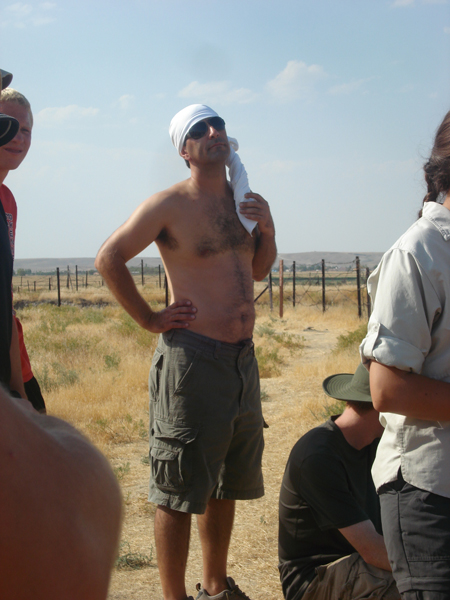
Our fearless (and shirtless) guide Aydin, at ancient Gordion. Sometimes it is even too hot for a Turk. (His "hotness" also garnered appreciative whistles and various unprintable comments from certain trip participants).
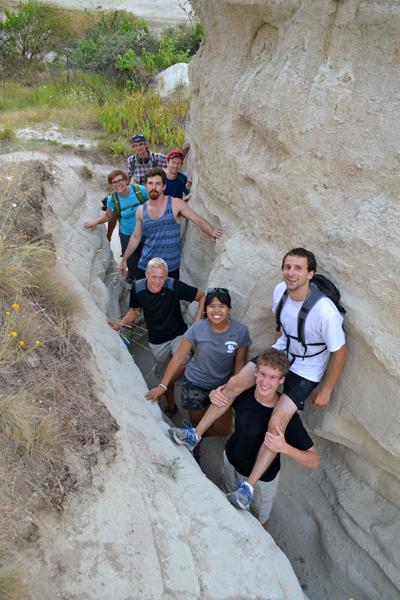
- Satisfaction: hiking through the Cappadocian landscape. (front to back: Colin Johnson, Duey Williams (on his shoulders), Victoria Fallgren, Geoffrey Melder, Andrew Gorini, Hanna Hanks, Anthony Johnson, and Andrew Gorini).
-
-
-

A group of our students hides out in the Underground City of Kaymakli. In ancient times, these cities were apparently used as refuges from invading armies. The population would head underground and wait out the invaders in the cool, carved rooms deep below the surface. I found this particular group hiding in one of the rooms -- they look rather nervous, which has ME nervous...
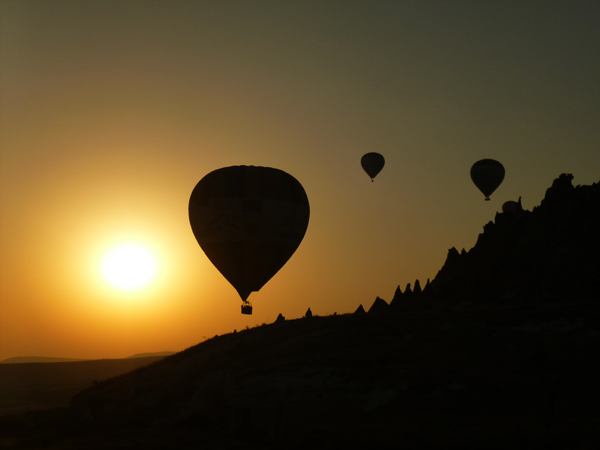
- Balloons at dawn over Cappadocia.
-

- View from the Monastery of St. Simon, near Antakya. Now surrounded by windmills, this quiet site with its spectacular views was once the home of St. Simon the Younger, a Christian holy man who sat atop a column (known as a stylite) for most of his life.
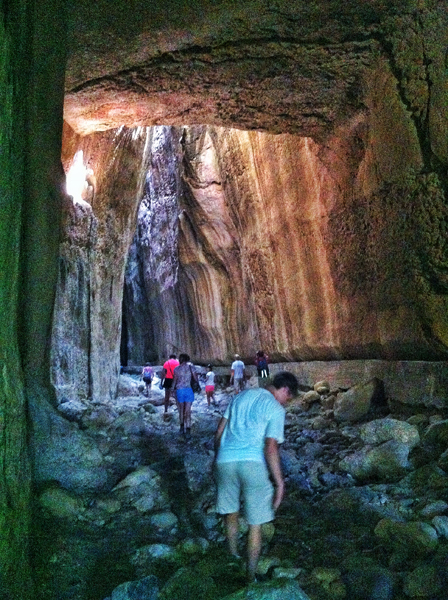
Walking through the Titus Tunnel at Seleucia ad Piera, just south of Antakya. One of Rome's greatest engineering feats, this tunnel -- over 200 m. long -- cuts through a mountain and diverts an entire river around Antioch's port town.

- Chatonie Chipman discovers the ruins of a temple amid the jungle creepers at ancient Olympus in Lycia.
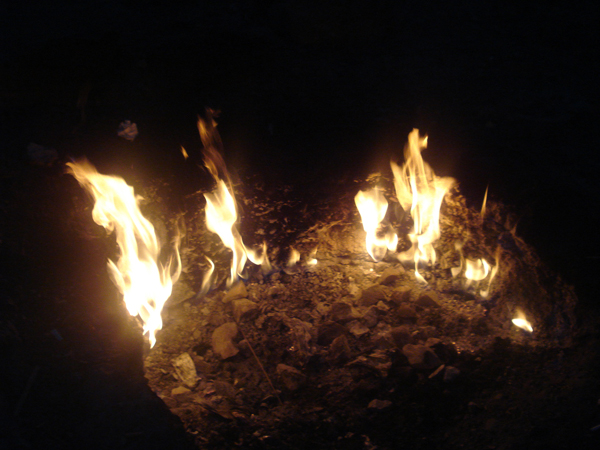
-
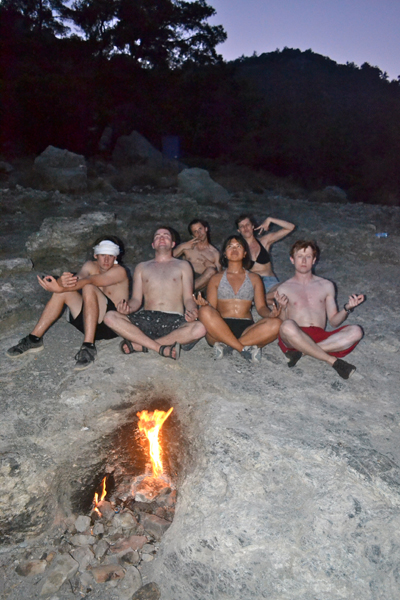
After a long day and a hot evening climb, students contemplate the flames of the Chimera, a natural phenomenon of gas jets located high on this Lycian mountainside (and associated with the legendary, flame-breathing beast -- part snake, goat and lion -- killed by the hero Bellerophon and his winged horse Pegasus).
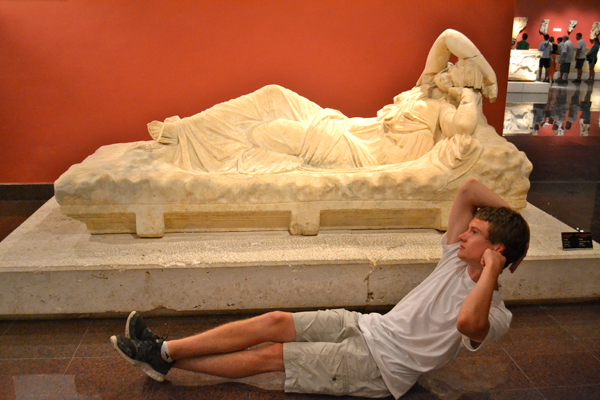
- Colin Johnson preparing for his marble sarcophagus portrait at the Antalya Museum (he’ll need to hold that pose for a few months, as they chisel in his image, but at least he’ll have abs of steel when its done).
-
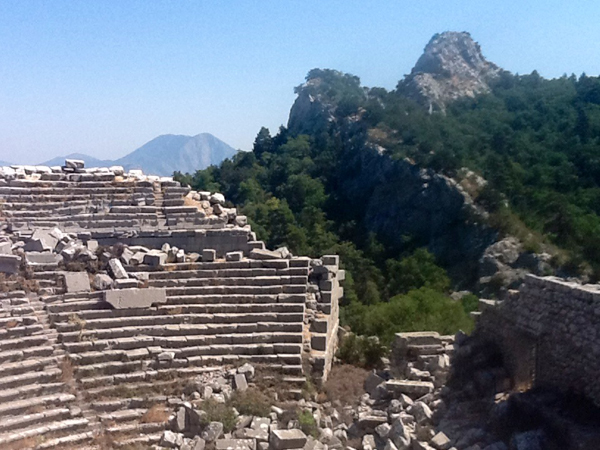
The beautiful theater in Termessos, the mountain city that Alexander the Great himself couldn't conquer. Actually, he didn't really try very hard, nothing up there that he needed. Or so he told people. We found it a beautiful site to walk around, as we spent several hours using our newly learned skills on ancient sites, identifying the creeper-covered buildings in what is now a national park.
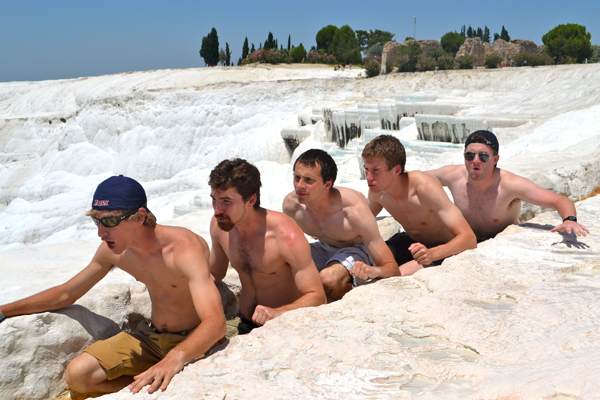
Cool runnings at Hierapolis (see below), featuring the nearly All-Andrew sled: (from front) Andrew Opila, Andrew Gorini, Andrew Williams, Colin ("wants-to-be-an-Andrew") Johnson, and Charlie ("big-Andrew-fan") Nichols. Watch for them at Sochi in 2014!
-

Our chariot: the Mesnevi bus driven by our Kaptan (driver) Altan Bey (in the front seat). A cool and much beloved sanctuary in a hot July Turkey. He has more than earned his "Lanyard of the Day" (see the Turkish Zag Travel show uploads, on this blog page or YouTube).
-
-
-
-
-
-
-
-
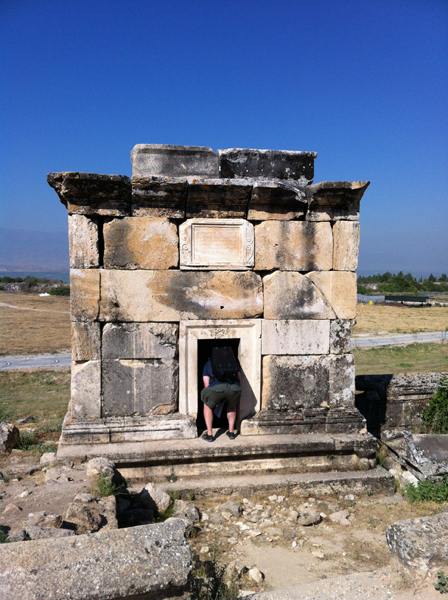
- Brian Foster-Dow: Tomb Raider (in the south necropolis of ancient Hierapolis).
-
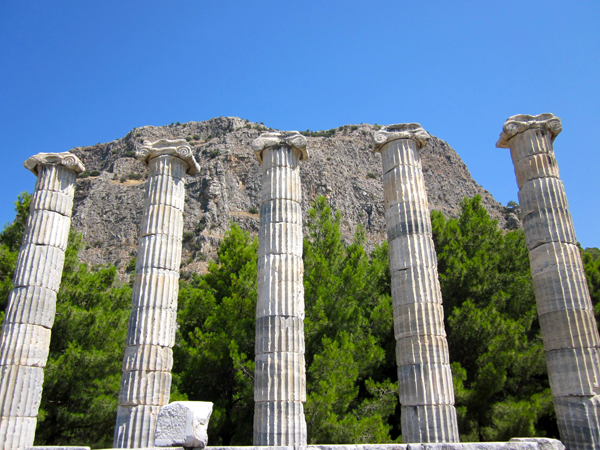
The re-erected columns of the Temple of Athena Polias at Priene, one of the most lovely sites in Turkey, with the VERY STEEP acropolis in the background.
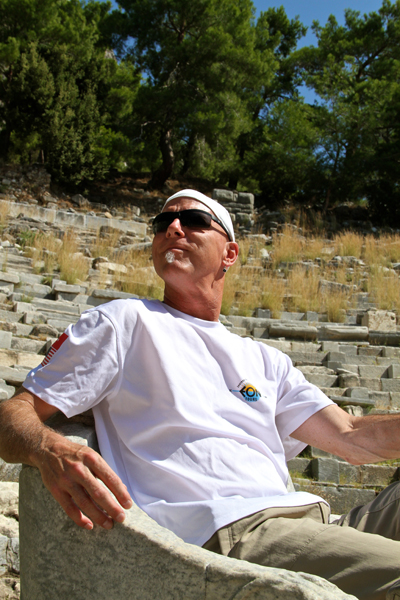
Prof. Dan Garrity, Invincible Video-magister, in one of the special thrones of the Priene Theater, reserved for the city's most important individuals. What could he be thinking? Possibly: "Hmmmm, that acropolis isn't TOO steep. Better send Opila up there for the shot, will look great on the Travel Show. Should only take a few hours..."
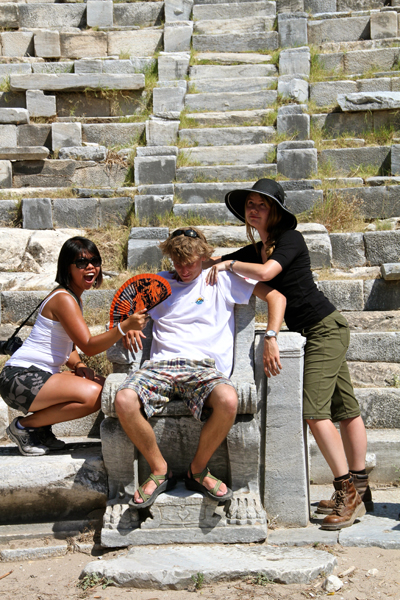
A weary Andrew Opila, receiving ministrations from sympathetic travelers Victoria Fallgren and Taylor Ann Sims, as he recovers from Turkish Zag Travel Show fatigue (TZTS syndrome). Check out the latest videos on this blog site, on the Travel Show page.
-
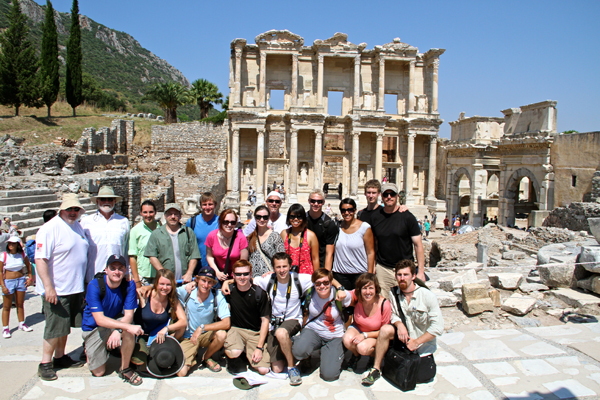 A full morning at ancient Ephesus, with the group before the famous Library of Celsus, on the Street of the Curetes.
A full morning at ancient Ephesus, with the group before the famous Library of Celsus, on the Street of the Curetes.

- Students and faculty inside the famous Slope Houses at Ephesus. These carefully excavated and reconstructed apartment buildings (Latin: insulae) rival anything found at ancient Pompeii for their richness of painted, marble and mosaic decoration.
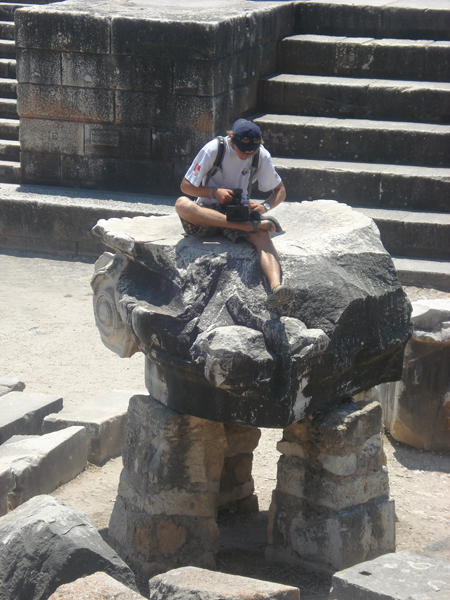
-
- Dan Garrity’s right-hand man, Andrew Opila, preparing to shoot video at the Temple of Apollo at Didyma, atop an Ionic column capital roughly the size of the Spike statue in front of McCarthy Arena (we’re talking VERY large here). Anything to get “the Shot”.
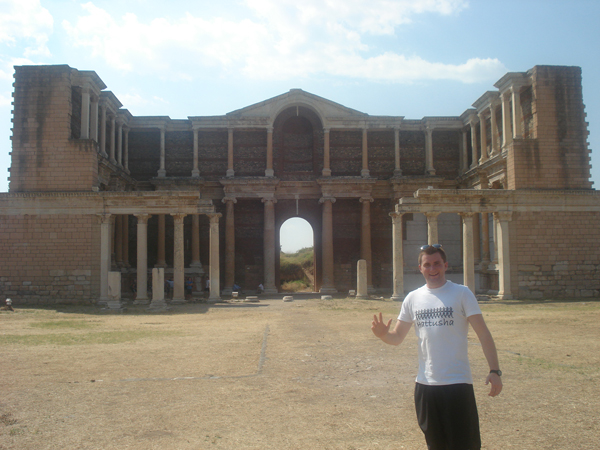
- Charlie Nichols (for scale) before the reconstructed bath-gymnasium complex at ancient Sardis.
The columnar facade (early 3rd century AD) of the bath-gymnasium complex at Sardis.
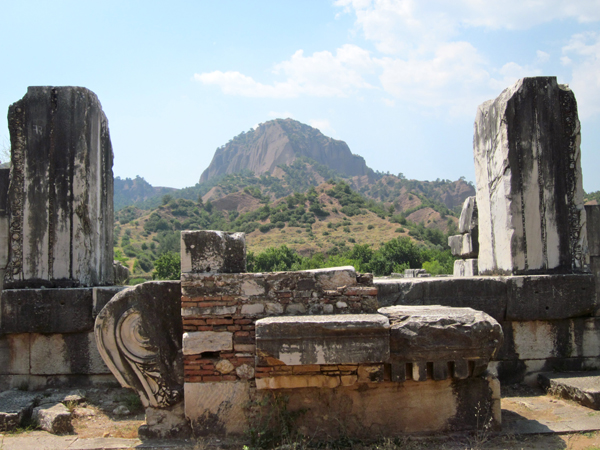
The ruins of the Temple of Artemis at Sardis, once the fourth largest temple in the Greek world but never completed (and eventually re-dedicated in part to the Roman imperial cult).

A weary Brian Joyce at the end of a hot morning at Pergamon, lying atop the Altar of Demeter. (Disclaimer: no actual students were sacrificed during this program. Suggestions by enthusiastic Classical Civ students, like Anthony Johnson (background, right), concerning a dramatic reenactment were firmly, but politely declined by a weary, bemused director, left foreground.)

Ah, the benefits of a Classical education! Andrew Gorini at the healing sanctuary of Aesclepius at Pergamon, taking on an honorific Greek inscription.

Students discover several statues of ancient athletes in the gymnasium at Pergamon, which coincidentally bear a striking resemblance to our own Geoff Melder (L) and Hanna Hanks (R).
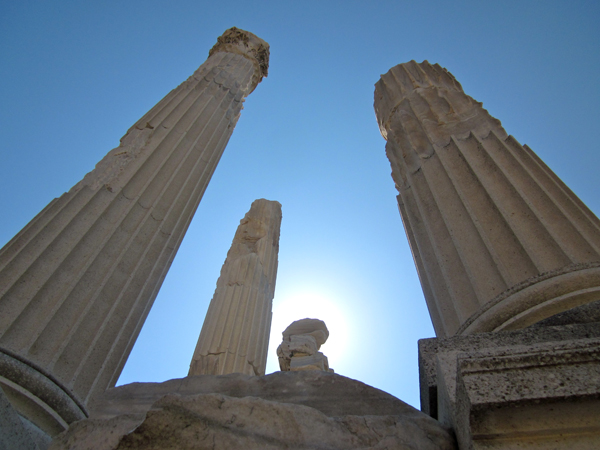
The re-erected columns of the Temple of Divine Trajan and Hadrian, atop the acropolis at ancient Pergamon, once the capital of Roman Asia Minor.
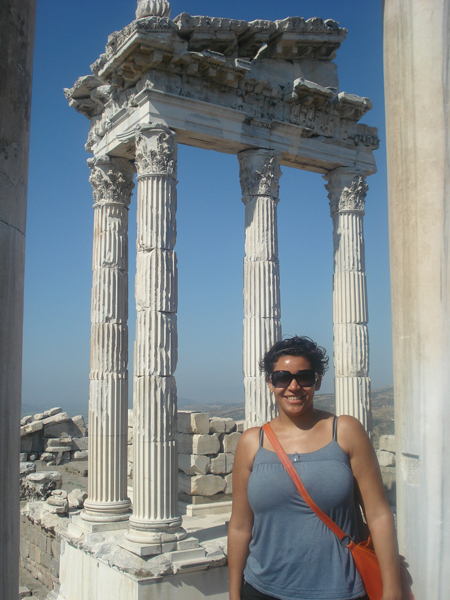
Chastonie Chipman, delighted to be at Pergamon, before the great temple of Divine Trajan and Hadrian, partially re-erected by the German excavation team (Gehen Sie, die Deutschen!).
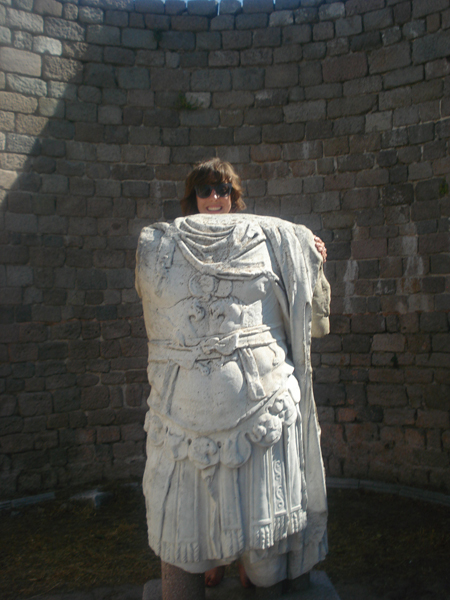
-
- Rachel Palmer (at ancient Pergamon) has clearly been bulking up, getting ready to take on Air France, who lost her luggage for 8 days. Go get ’em, Rachel…
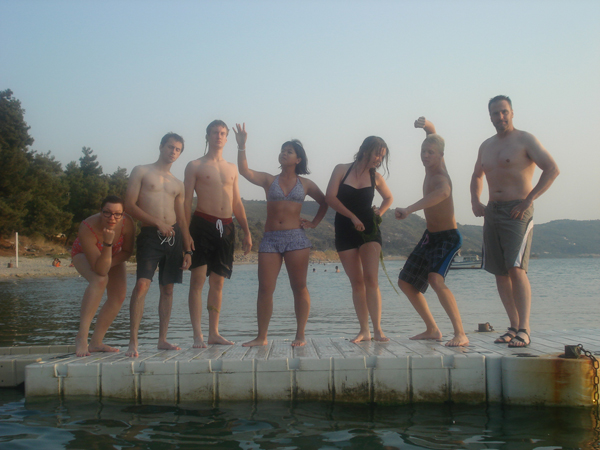
-
- In the footsteps of Alexander the Great and Lord Byron, the students swam the Hellespont (not across it, but swam in it; the current is too strong).
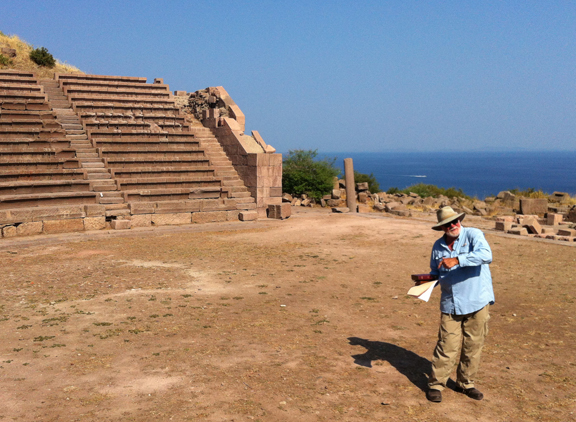
-
- A windblown Fr. Steve Kuder, S. J., at the theater of ancient Assos, discussing (New Testament in hand) the overland journey of St. Paul to that city.
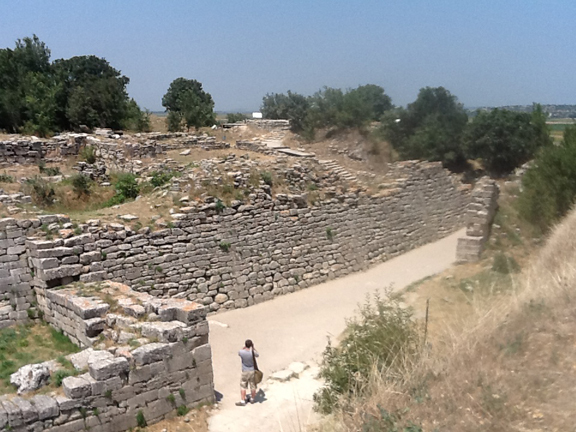
-
- The famous walls of Troy (ca. 1800 – 1300 BC), around which Achilles, Hector and our own Brian Foster-Dow once ran. For Brian’s story (which happily did NOT involve being chased by Achilles), see the Student Reflections page on this blog.
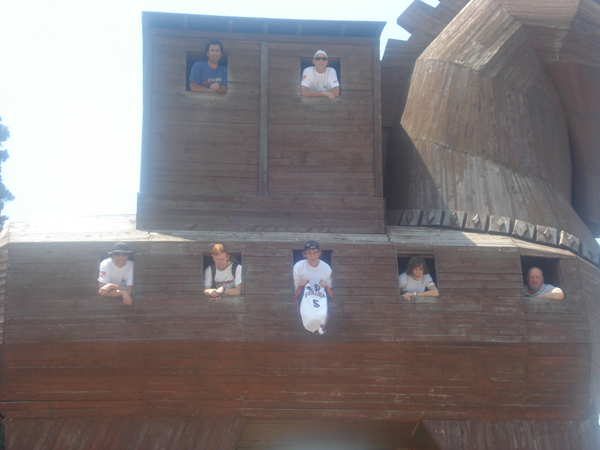
Turns out that the Greeks in the Wooden Horse were actually the cast and crew of the Turkish Zag Travel Show (accompanied by Flat Spike). Go figure. This represents one of the rare moments that this crew is actually standing still: visit the blog page containing their latest episodes about the Gonzaga-in-Turkey program (breaking all previous speed records for production, editing and upload!).

-
- At the ancient site of Troy, we encountered a large wooden horse outside of the ancient walls. We climbed inside to find a number of Greek soldiers who told us to go away and beware, something about “bearing gifts” to the Trojans.
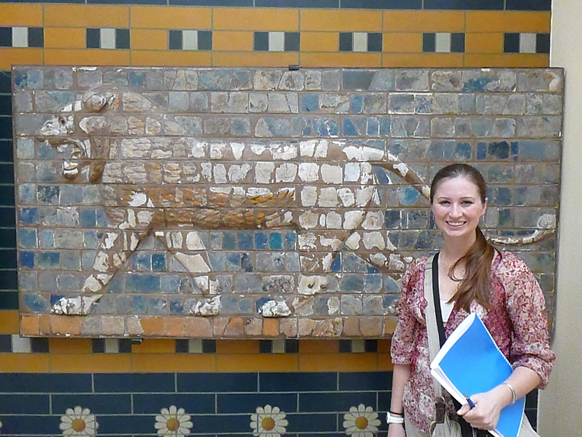
Lauren Kuhn ’13 at the Istanbul Archaeological Museum, getting to know a Neo-Babylonian lion (6th Century BC) from the Ishtar Gate of ancient Babylon.
-
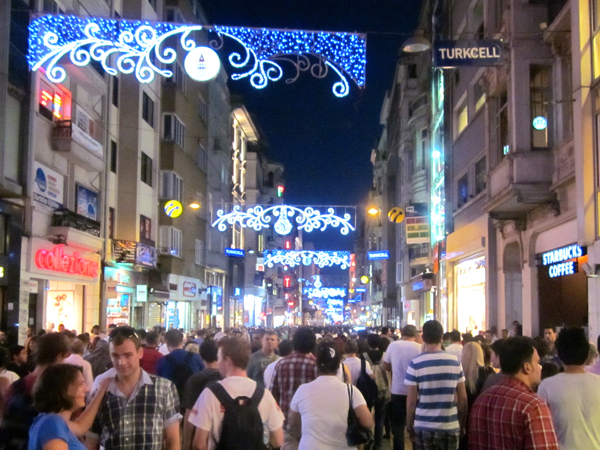
A Saturday night on Istiklal Caddesi, the most important (and crowded!) street of Beyoglu, the old European district of Istanbul to the north of the Golden Horn. Often packed with people (esp. at night), this street lies at the heart of the modern city.
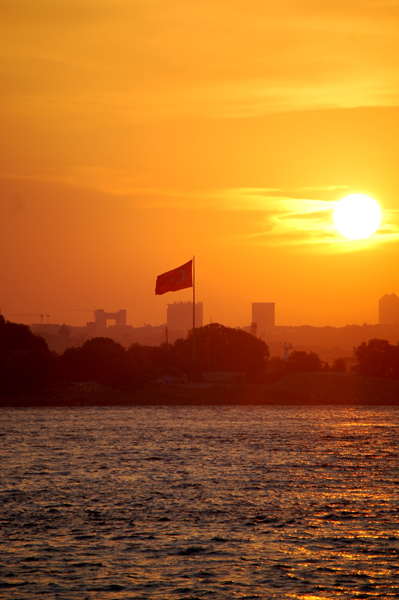
Returning from Kadikoy on the Asian side of the Bosphorus, we were treated to a beautiful sunset over the Old City as we enjoyed the cool breezes over the water.

Brian Joyce and Victoria Fallgren on the first day in Turkey, when they fortuitously discover Cappy fruit juices. Thus begins an enduring addiction, which quickly spread to the entire group, inducing many a "Cappy Happy" moment over the next several weeks.
-
-
Recent Posts
Recent Comments
Cities
Gonzaga Links
Meta

